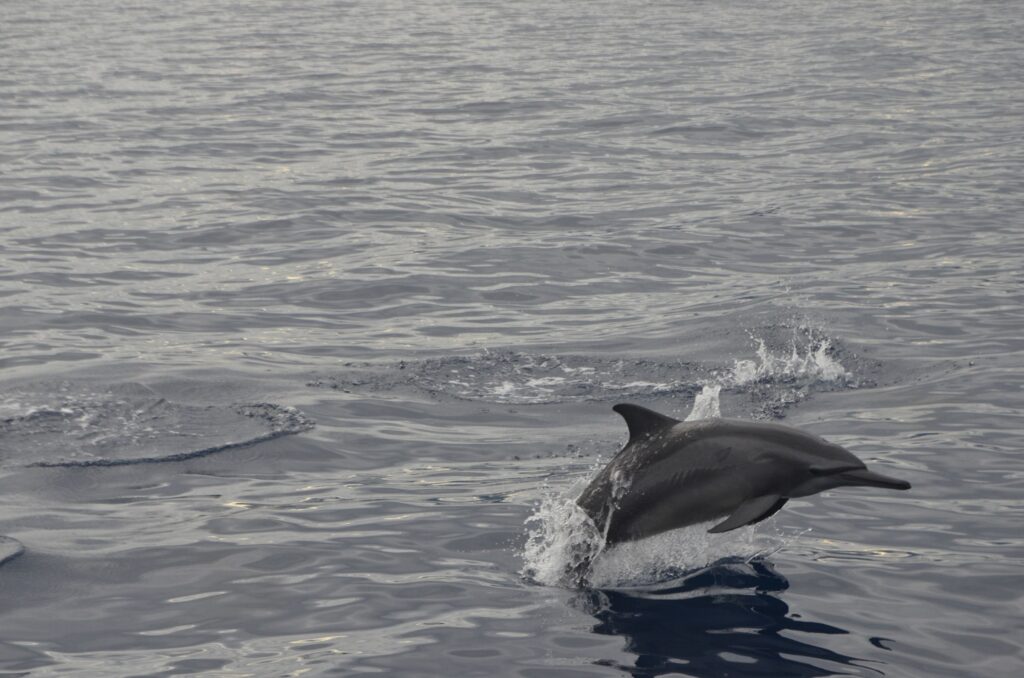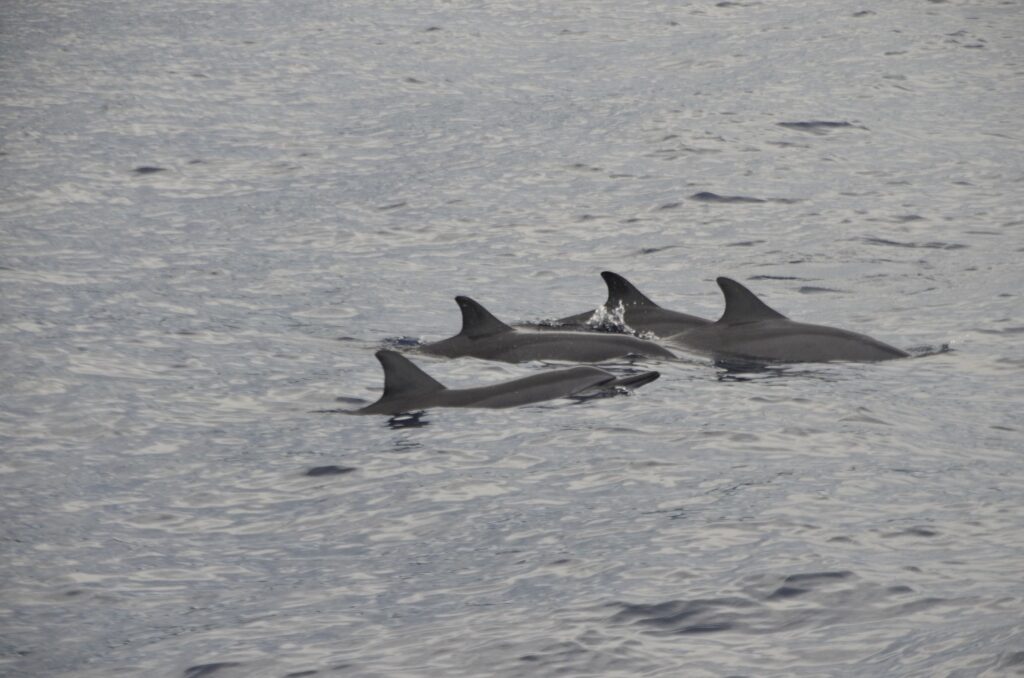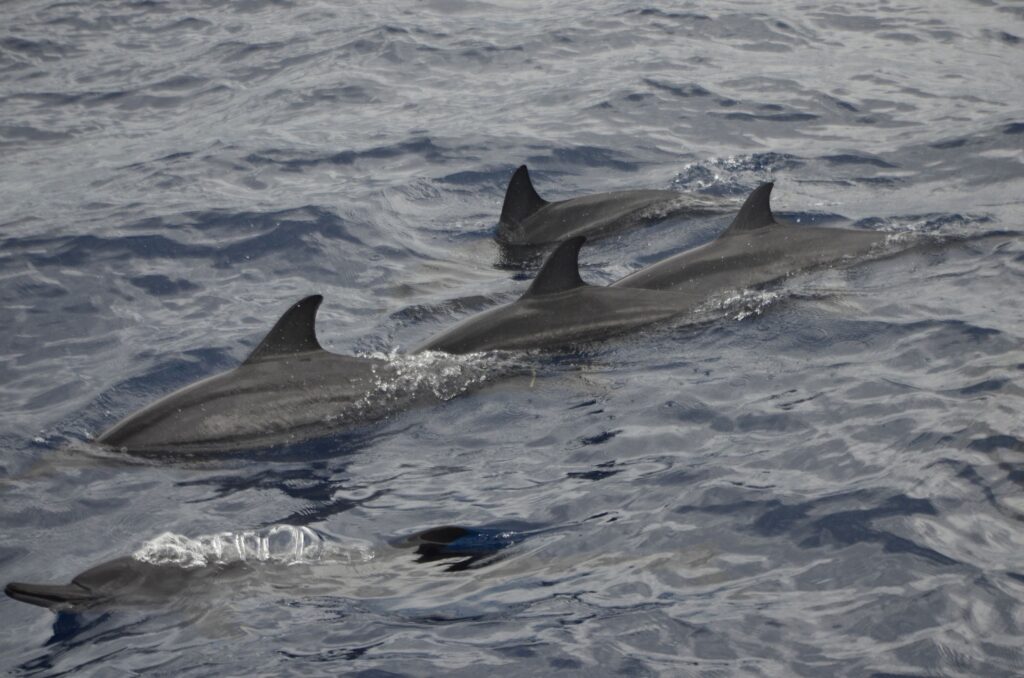Dolphins in Tañon Strait declining and in peril
By Henrylito D. Tacio
Unchecked ecotourism and overfishing are threatening the cetacean biodiversity of the famous and richly diverse Tañon Strait, according to researchers from the University of the Philippines – Diliman College of Science (UPD-CS).
The Tañon Strait, which separates the islands of Cebu (east) and Negros (west), extends from the Visayan Sea on the north to the Bohol Sea on the south. Its width varies from 5 to 27 kilometers, with the narrowest point in the south. In the north the strait is closed off by the Don Islands, the largest of which is Bantayan.
Tañon Strait is renowned worldwide for its rich marine life. It is home to several cetaceans, including 15 species of dolphins and whales. However, recent findings suggest that the populations of these marine creatures are on a fast decline.
“We encountered only between 80 and 90 individual spinner dolphins throughout our four-day survey. This is in stark contrast to surveys in previous years, where we might spot as many as 100 individuals in just one day,” said Dr. Lemnuel Aragones, head of the UPD-CS Marine Mammal Research and Conservation Laboratory (MMRCL).
In 1998, during the time of the presidency of Fidel V. Ramos, Tañon Strait was declared a protected seascape under Proclamation No. 1234.
According to a feature published by Rappler, the Tañon Strait is the country’s biggest marine protected area covering 521,018 hectares. It is 5 times larger than the more famous Tubbataha Reefs Natural Park, which is only 97,030 hectares.
“Because of its size, Tañon Strait encompasses smaller but better-known protected areas including the popular diving sites in Moalboal, Malapascua, Bantayan Island, Pescador Island, Mantalip Reef and more,” Rappler said.
Last July 20 to 23, Dr. Aragones spearheaded the survey focusing on dolphin populations within the southern part of Tañon Strait. The initiative revealed deeply concerning trends, such as a decrease in dolphin numbers, a reduction in species diversity, and evasive behavior possibly linked to increasing human activity in the area.
Surveys conducted in the past witnessed vibrant gatherings of diverse species of cetaceans – including numerous kinds of dolphins and species of whales, with groups of as many as 100 individuals spotted in a single day.
The recent survey was starkly different. The researchers found only three species: spinner dolphins, common bottlenose dolphins, and dwarf sperm whales.
Of particular concern was the notably evasive behavior of the dolphins, a possible sign of stress or disturbance due to the persistent presence of aggressive dolphin watching boats.
Dr. Aragones and his team, who have been monitoring the region since 1997, noted a significant increase in the number of dolphin-watching boats, even notwithstanding the destruction caused by Super Typhoon Odette in 2021.
The area now hosts around 60 boats, down from the original 260. Nevertheless, Dr. Aragones fears that this may still be too much. “Too many dolphin watching boats in the area disrupts the cetaceans’ habits,” he deplored.
Dr. Aragones also warned against the overutilization of the area’s resources. “There should also be a comprehensive assessment of fisheries resources in the entire Strait as there is clearly less food now for these creatures,” he pointed out.
To preserve the delicate ecosystem and to safeguard the remarkable marine mammals in Tañon Strait, the scientists have proposed several measures.
First, they recommend a moratorium on adding more boats to the already existing fleet. Second, a comprehensive assessment of fisheries resources including fishing activities in Tañon Strait is essential, as a decline in food availability may be exacerbating the dolphins’ struggles. Furthermore, strict monitoring and regulation of illegal unreported and unregulated (IUU) fishing practices in the area are necessary.
Dr. Aragones emphasized the importance of educating boat operators on responsible dolphin watching protocols. A certification process that trains operators to navigate around dolphins without causing stress could play a pivotal role in protecting these charismatic animals.
Research also suggests that previous ecotourism activities negatively impacted dolphin behavior, reinforcing the need for responsible and sustainable tourism practices.
The findings from this survey underscore the critical situation facing dolphins in Tañon Strait. Urgent action is imperative to ensure the survival of these magnificent creatures and to maintain the delicate balance of the marine ecosystem they inhabit.
Meanwhile, the rare Irrawaddy dolphins of San Miguel Bay in Bicol are reported to be “at risk of disappearing from the region,” according to UPD-CS.
The Department of Environment and Natural Resources (DENR) considered the Irrawaddy dolphins as critically endangered.
A survey was conducted by the Institute of Environmental Science and Meteorology from July 6-9. The team sighted two Irrawaddy dolphins – one near Apuao Island and another near Canimog Island, both in the waters of Mercedes, Camarines Norte.
But they observed only a few of these are left in San Miguel Bay, the ideal place for this type of dolphins to thrive.
“It is most likely that the Irrawaddy dolphins are using the offshore islands in the San Miguel as a refuge area, and that there is now probably less food for them there since it is one of the most over-exploited fishing grounds in the country,” said Dr. Aragones. – ###
Photos courtesy of UPD-CS





